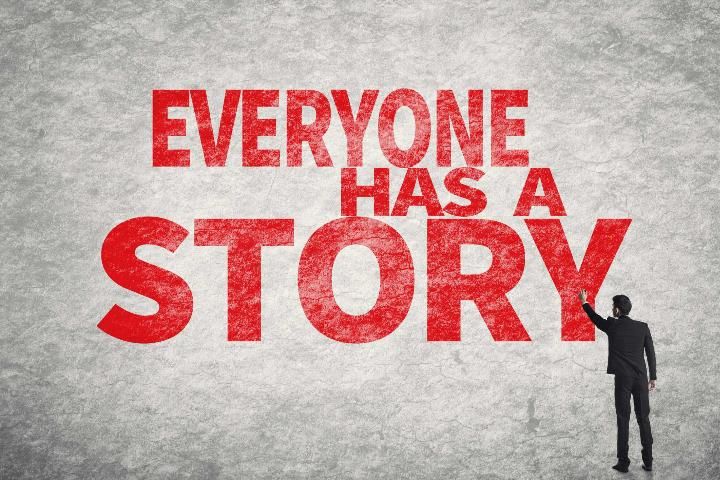This publication covers an introduction to storytelling writing and is the first of a four-part series on crafting your story, including Letting Them In: Sharing Your Story with People outside of Your Industry (AEC554), Face-to-Face Storytelling (AEC555), and Storytelling through Social Media (AEC556). This series will focus on both personal and organization stories.

Credit: elwynn1130/iStock/Thinkstock.com
Introduction
Whether for personal growth, relationship building, or team leadership, knowing your story and how to share it will change the way you interact with the world. As you share these stories, you help others learn from your experiences and establish meaningful human connections. By learning how to reflect on your past, you are better equipped to engage your future.
Storytelling encourages collaborating with individuals and organizations alike. By developing the story of your organization, you can improve customer relations, employee engagement, and management styles. It is important to craft your story in a way that lets you share it effectively because, as the late poet Maya Angelou said, "People will forget what you said, but they will never forget how you made them feel." If your story can invoke emotion within your audience, audience members will connect to your product and message.
What is a story?
A story, at its basic level, is told as a series of connected events that are either written or spoken. When you look at your life as a story, those connected events are the important moments in your life. When leveraged effectively, stories can connect, move, and inspire people. Because people connect with a story much more than a product, it is vital that you craft the right narrative for your wanted consumers.
WhatiIs the storypProcess?
As you begin to craft your story, you want to answer three questions:
- Who is the lead character (protagonist)?
- What is the goal? What does the lead character want?
- What conflicts or barriers did the lead character overcome to achieve that goal?
Here is short example of a story that shows a lead character trying to overcome a barrier: "I am a strawberry grower, and I'm trying to save my farm operation. To do this, I must create manageable cost-cutting measures, but I have not come up with solutions as of yet." In this case
- I am the protagonist (lead character);
- my goal is to save my farm operation; and
- my conflict or barrier is finding cost-cutting measures.
Once you have determined these three elements, then you have essentially created the beginning of a quality story. A quality story usually includes
- descriptive detail;
- more than one obstacle, because having more than one obstacle builds tension and draws people in to the story;
- the story progressing in a logical manner; and
- a worthy goal in the eyes of the desired consumer.
Delivering Your Story
You can deliver your story in many ways. One simple method you can utilize to help you deliver your story is the use of AABT: And, And, But, Therefore. This method helps structuring the details of your story for your audience.
- The use of And connects details that paint the picture of your story, the way in which you choose to pursue your goal. Two And's are used to encourage you, as the storyteller, to provide your audience with more supporting details about your story.
- The use of But shows that you encountered a conflict.
- The use of Therefore signifies how you overcame the conflict and what the result was.
The And, And, But, Therefore method can be used to enhance any story. For example, if you are a strawberry grower wanting to provide your farm's story to potential consumers and use And, And, But, Therefore, your story could sound like this:
I am a fifth-generation strawberry grower and I am trying to save my farm operation. There are compounding costs associated with my current operation, and I must create manageable cost-cutting measures, but I have not come up with solutions, as of yet. If I cannot find manageable solutions to cut cost, I will be forced to sell my farm. I want to continue the family business, so selling is my last resort. Therefore, to reach my goal, I reached out to my local extension agent for advice on possible solutions that could save my farm. Through seeking the advice of my local extension agent, I implemented new farming techniques into my operation and continued to keep the farm in the family name.
Summary
It is important to structure your stories effectively to reach your potential consumers. The aforementioned framework is a powerful tool to help you craft your story.